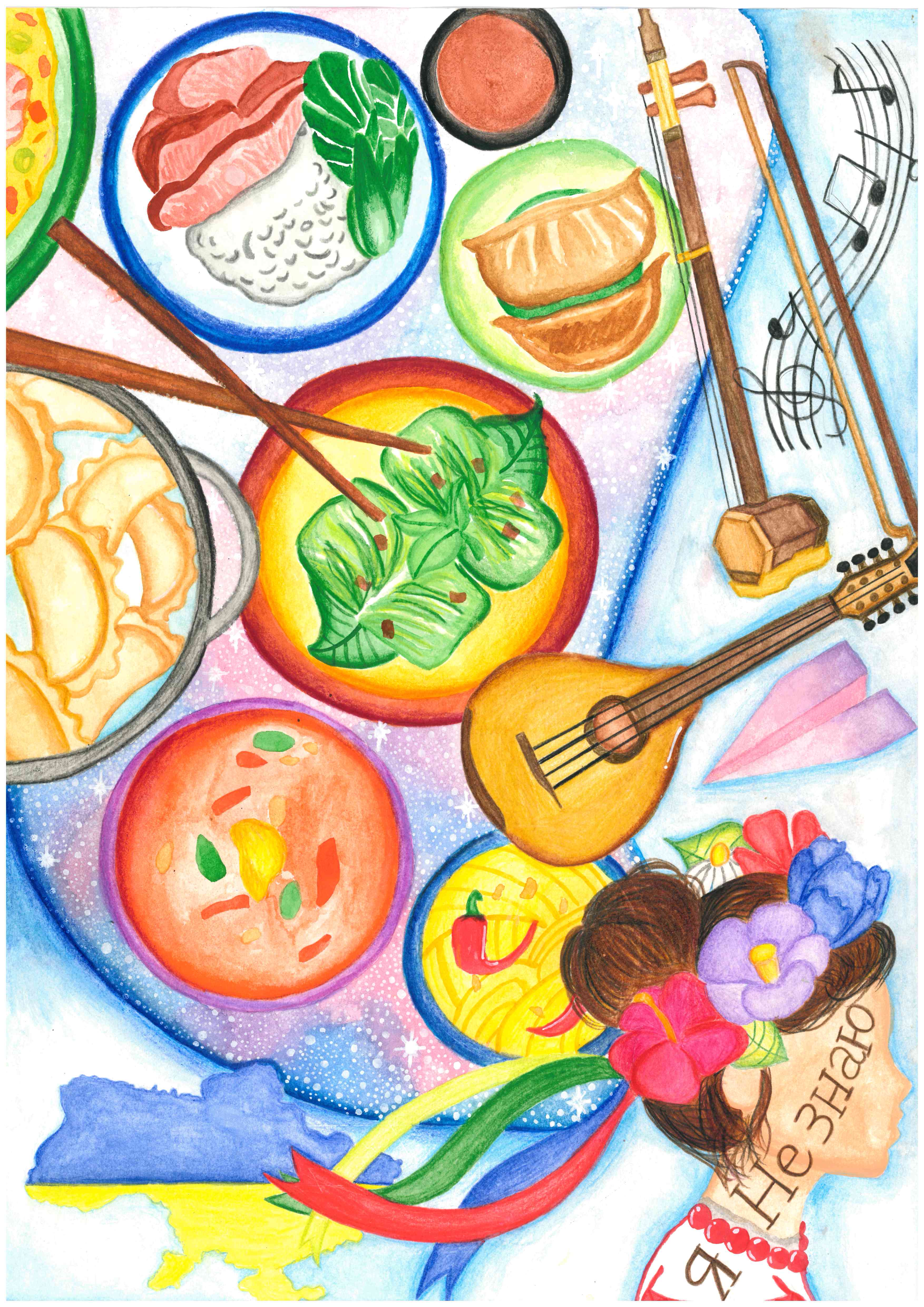
A visual representation of "At the Daipaidong" by Kate Rogers
FUNG Wan Hei Scarlet
St. Paul's Convent School
My artwork shows cultural appreciation and diversity. In the poem, the speaker expresses her affection for her Ukrainian mother’s dishes which are significant and irreplaceable to her. To display the speaker’s joyful remembrances about the Ukrainian culture, bright and vivid colours are used. The meals are painted as lively and realistic as possible to emphasise the precise details of those items that she remembers and how much she values them, such as the crackling of a pork roast and the cheese curds in the perogies.
As illustrated by ‘я не знаю’ (meaning ‘I don't know’), she does not know Ukrainian but she still finds this culture appealing. In the painting, her sense of belonging to this place is reflected by the traditional dress, Vyshyvanka on her body. The space-themed background shows that different cuisines are intertwined in the same universe. Next to the speaker is a paper airplane representing her hunger for knowledge, and her ongoing journey in exploring Ukrainian culture. Despite not having a chance to visit her motherland, she still feels connected to her home culture.
At the Daipaidong1
Noodles bite me back
with garlic and chilli,
singe my palate.
Take that, yearning tongue,
they whisper as they slither by.
Dumplings fold plump hands
in their laps.
At night I dream of pinching shut
the gaping mouths of perogies2,
stuffed not with pork and leek,
but cheese curds and sauerkraut3.
They dive into boiling water
to do somersaults.
Chow fan4 could easily fill cabbage rolls:
Those Holubsti5 my mother made
to line my winter stomach.
Char Siu6 is as sweet
as the crackling on her pork roast.
If she were here she’d say,
Don’t talk with your mouth full.
It isn’t clear what language
You are speaking.
She grips English syllables
carefully between her teeth—
enunciates each morsel of sound.
The instrument I hold by the throat
in Tom Lee’s Music
looks like an Er-hu7,
but could have been a mandolin.
There may be eight tones, or nine.
In Cantonese, words are sung
more than said.
Mother didn’t want me to learn
the language of her childhood.
In Ukrainian my only phrase is,
Ya ne znayu: я не знаю8:
I don’t know.
Kate Rogers
1 a casual street restaurant
2 Ukrainian or Polish dumplings
3 sour fermented cabbage
4 fried rice
5 cabbage rolls stuffed with rice and meat
6 Cantonese roast pork marinated in a sweet sauce
7 a traditional Chinese two-stringed musical instrument
8 Cyrillic script for “I don’t know.”
“At the Daipaidong” was published in Foreign Skin by Kate Rogers, p.27. Copyrights© 2015 by Kate Rogers. Reprinted by permission of the poet.